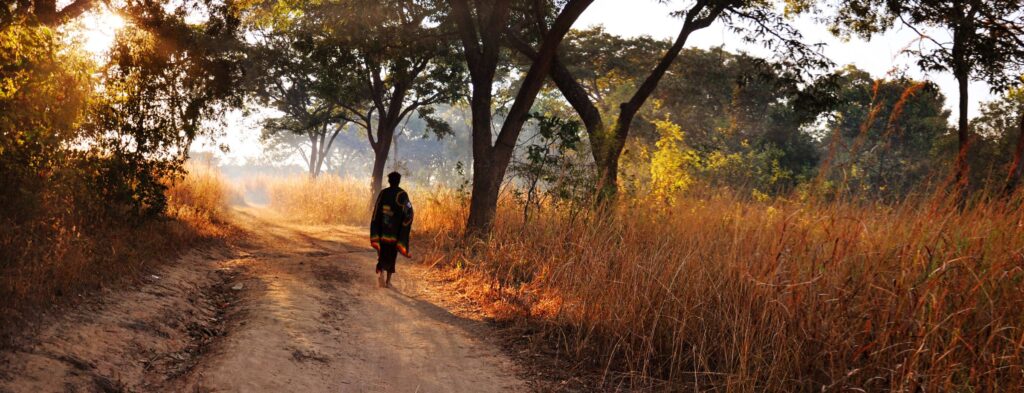Introduction
In 2021 I completed my Masters in Member Care dissertation on the topic, ‘Burnout in Zambian Women in Ministry and Humanitarian Work’.[1] At the time of writing, I had been working as a missionary in Southern Africa, mostly Zimbabwe, Mozambique, Angola, and Zambia for 27 years. In my role as regional member care facilitator in that region, I had seen several women go through burnout on the mission field. For some this resulted in an end to their missionary service, for others, it meant an extended absence from the field. As I did not see or hear about such experiences among men in our mission, I wondered why burnout seemed to be more prevalent among women. I began to wonder if it was related to our African culture. This birthed the desire to explore burnout in women in ministry settings to find how culture influenced their burnout experience.
Additionally, as I began my research, I found that although burnout is a universal phenomenon, with much literature on the subject, a gap existed in terms of burnout literature in African contexts, especially church and mission contexts. There is a scarcity of African studies on burnout[2] and according to Bährer-Kohler,[3] most African studies available have only been developed in the last decade. An internet search using the term ‘Africa; burnout’ yielded 6,640 results of African studies on burnout, the majority of these done in South African contexts and mostly focusing on healthcare professionals. South African studies, with their strong Western influence, are limited in their relevance to other Sub-Saharan African contexts.[4] A few other studies done in other African countries focus mostly on education and health workers. This reveals a clear literature disparity between Africa and other continents around burnout.

The Study
Schaufeli and Greenglass’s definition of burnout as ‘a state of physical, emotional and mental exhaustion that results from long-term involvement in work situations or otherwise, that are emotionally demanding’[5] was adopted for this study.
In considering how Zambian culture might influence the experience of burnout, the research questions in this study were formulated in two ways—the primary question and sub-questions. The primary question was, ‘How does Zambian culture influence the experience of burnout in Zambian women in ministry and Zambian women in humanitarian work?’ The sub-questions were, ‘How do Zambians view burnout? What might be different about burnout in this culture? How does the culture influence recovery?’
The study[6] generated data by means of a questionnaire and semi-structured interviews. Contextually specific, semi-structured interviews of six women in ministry and humanitarian work were complemented by the general trends about burnout from the questionnaire. Of the 80 questionnaires sent out, 56 responded, 25 percent male and 75 percent female. Since cultural issues were involved, the male voice was important as it helped validate the findings.
How Zambian Culture Influences Burnout
Extended Family and Community Support
In collectivist cultures the community and extended family take care of one another. However, sometimes, due to shifting cultural paradigms, competition, suspicion, and fear, this natural support system falls apart. Interviewees indicated that the extended family and community support influenced their burnout experience either positively, negatively, or both. In some cases, the expectations of the extended family put pressure on the individual. Interview and survey findings both revealed that we cannot take community and extended family support for granted based on the culture in question being collectivist.
The Spiritual Dimension in Burnout
Although not specifically asked in the questions, interviewees highlighted the spiritual aspect of their lives as a significant influence in the burnout experience. This influence ranged from helping to understand the problem to helping towards recovery. Respondents felt there was a lack of easy access to burnout help and support in the workplace, even though some of these organizations were Christian. It is therefore significant that the interviewees could avail themselves of spiritual support on a personal level apart from the organization.
Keeping up Appearances
The behaviour of trying to maintain certain appearances also emerged naturally in the interviews without being asked specifically. Interviewees talked about how they had to continue just going through the motions daily when in fact, their energy, motivation, and joy had run out. These findings are reflective of the ‘honor-shame’ aspect of Zambian culture.[7] People seek to keep up the appearance of agreement and acceptance of cultural expectations. This highlights the need for the creation or provision of a safe place where people have the freedom to be real.
Overarching Themes
Three overarching themes emerged from the data:
The Nature of Burnout
Interviewees talked about how they had to continue just going through the motions daily when in fact, their energy, motivation, and joy had run out.
While there is significant awareness of burnout in Zambia, burnout may not be described or expressed in the same way as in most Western contexts.[8] With reference to Maslach’s burnout dimensions—emotional exhaustion, depersonalization, and lack of personal accomplishment[9]—the study showed that the burnout phenomenon was mostly characterized by emotional exhaustion and lack of personal accomplishment as compared to depersonalization or cynicism, described as negative or inappropriate attitudes towards clients, irritability, loss of idealism, and withdrawal.[10] This could be attributed to Zambian cultural aspects of group orientation and to honour-shame tendencies where interviewees felt obligated to ‘be nice’, and to ‘keep up appearances’ in order to save face.
Positive and Negative Influence of Culture
While extended family and community support was said to influence positively on burnout in some of the interviews and the survey, this also influenced negatively, with the negative influence rated higher than the positive. The combined data showed that extended family and community pressure, expectations, and lack of understanding caused stress that contributed to burnout. This finding is significant, especially as we investigate burnout interventions in this context.
Family, cultural, and societal expectations in the power distance context—power distance being the way people relate to each other on a hierarchical basis—can also lead to negative consequences. For example, the idea of ‘a woman’s place’ (the distribution of roles and responsibilities in the home) emerged from the study. Harmonizing with the honor and shame culture,[11] the expected women’s roles include working in the kitchen, household chores, and taking care of the children. This, however, leads to disproportionate burden bearing, as women are still expected to work or do ministry outside the home. Although this issue is not exclusive to Africa or Zambia, it is an issue that needs to be addressed in this context if we are to mitigate the prevalence of burnout in Zambian women.
The Road to Recovery
Spirituality emerged as the biggest factor towards recovery. This highlights the Importance of ‘Master care’ even though burnout affects the whole person—physical, spiritual, emotional, and mental.[12] Despite being in burnout, interviewees were able to have a significant connection with God. This spiritual connection with God was central to understanding their situation of burnout, initiating the healing process, and ultimately finding the path to recovery.
Self-care through boundary creation has also emerged from the interview data as a strong factor towards recovery. For the interviewees, coming to realize their own responsibility for the creation of personal boundaries, despite family and cultural expectations, put them on the road to recovery.
There is a need for . . . member care responses that specifically take into consideration the cultural factors that influence burnout.

Implications and Recommendations
There is a need for member care responses in general that address burnout in places of work in Zambia, and a need for member care responses that specifically take into consideration the cultural factors that influence burnout. A similar study that explores how culture influences men in Christian ministry would serve to provide a comparison between the genders to see how the earlier mentioned cultural categories influenced burnout in Zambian men, thus enhancing member care of the whole team.
Firstly, an effective response is having member care as part of line management as it places the member care provider higher up in the hierarchy. Secondly, incorporating regular breaks into the organizational structure will allow staff to take breaks or holidays without feeling guilty, or feeling they are indulging themselves, thus addressing the collectivist aspect of the culture. Thirdly, providing educational opportunities like workshops and seminars on burnout in the workplace or organization will increase awareness on the prevalence of burnout in Zambia, the influence of culture on burnout, and the susceptibility of Zambian women to burnout due to cultural influences. Lastly, since the writing of this paper, several burnout awareness and prevention initiatives have been developed in Zambia, which would be worth looking into.
Conclusion
This study is a significant step in beginning to address some gaps in the research on burnout, especially in relation to culture. It shows that Christian ministries and humanitarian organizations could benefit from taking into consideration cultural influences on burnout in their staff and employees, in order to create culturally appropriate burnout interventions.
Endnotes
- Anisa Moosa, ‘Burnout in Zambian Women in Ministry and Humanitarian Work’ (MA Member Care diss., Redcliff College, 2021).
- Sabine Bährer-Kohler, ed. Burnout for Experts: Prevention in the Context of Living and Working (New York, NY: Springer 2013), 20-21.
- V.C. Thorsen et al., ‘High rates of burnout among maternal health staff at a referral hospital in Malawi: A cross-sectional study,’ BMC Nursing, 10, no. 9, (2011) 2-7, https://bmcnurs.biomedcentral.com/articles/10.1186/1472-6955-10-9.3. Sabine Bährer-Kohler, ed. Burnout for Experts, 20.
- Colin J. Bundy et al., ‘South Africa,’ Britannica, accessed 14 January 2020, https://www.britannica.com/place/South-Africa.
- Wilmar B. Schaufeli and Ester R. Greenglass, ‘Introduction to Special Issue on Burnout and Health,’ Psychology and Health 16 (2001), 501-510, DOI: 10.1080/08870440108405523.
- John Creswell, Research Design: Qualitative, Quantitative and Mixed Methods Approaches, 3rd Edition (Thousand Oaks: Sage, 2009), 213.
- Jason Georges and Mark D. Baker, Ministering in Honor-Shame Cultures: Biblical Foundations and Practical Essentials (Downers Grove: IVP Academic, 2016).
- Some unique expressions from interviewees regarding the nature of burnout: ‘I wished the earth would stop, so I could jump off, then catch up later,’ ‘You lose the flavour of life. It’s like eating flat food that’s not salted,’ ‘It can feel like you’re getting buried alive,’ ‘I would feel like I had malaria even when it was not malaria,’ ‘I felt like that wasn’t my body. It wasn’t me,’ and ‘losing sight of one’s identity and purpose.’
- Christina Maslach and Michael Leiter, ‘Understanding the burnout experience: recent research and implications for psychiatry,’ World Psychiatry 15, no. 2, (June 2016): 103, https://onlinelibrary.wiley.com/doi/epdf/10.1002/wps.20311.
- Christina Maslach, Michael P. Leiter and Wilmar Schaufeli, ‘Measuring Burnout,’ accessed 20 December 2023, https://www.wilmarschaufeli.nl/publications/Schaufeli/298.pdf.
- Scott D. Taylor, ‘Culture and Customs of Zambia,’ (Westport, Connecticut: Greenwood Press 2006), 94-95.
- Brenda Bosch, Thriving in Difficult Places: Member Care for Yourself and Others, Volume 1, Chp.2 (Pretoria, South Africa: Group7), 2014.





